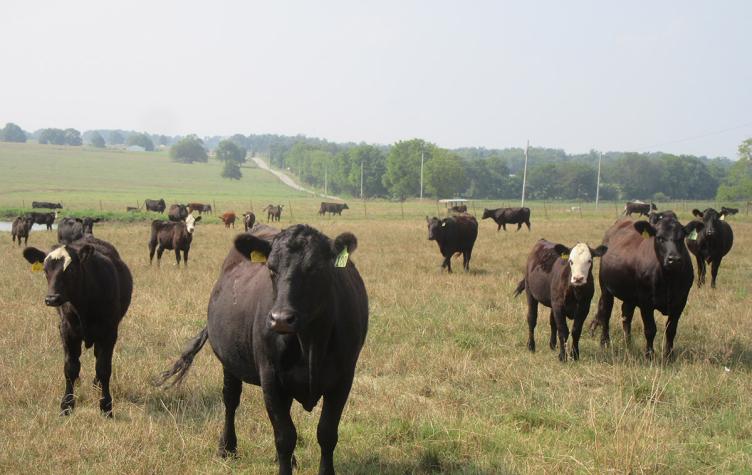GALENA, Mo. – Compared to other parts of the agricultural community, graziers of cattle depend less on fossil fuel and more on solar energy to turn a natural resource like grass into a sellable commodity, says University of Missouri Extension agronomist Tim Schnakenberg.
Graziers can save on operating expenses and provide quality feed to meet nutritional needs by allowing cows to do selective harvesting, he says.
The job of a grazier, often referred to as a solar panel manager, is to maintain plenty of grass blades (solar panels) to convert the sun’s energy through photosynthesis into carbohydrates for livestock to graze. Graziers continually look for ways to reduce undesirable solar panels such as bare soil, overgrazed plants, mature plants and weeds.
When producers adopt a management-intensive grazing (MiG) system, they develop a controlled grazing strategy that results in longer pasture rest periods. These rest periods increase the quality and quantity of forage, enhance utilization, increase forage persistence and reduce weed pressure, says Schnakenberg.
University research shows that farms with at least eight paddocks offer graziers more control. A number of graziers have implemented many more than eight, and some use temporary fencing to improve the paddock grass use efficiency.
Control stubble height, keep roots growing
Control stubble height, keep growing points, provide for photosynthesis and keep roots growing during grazing periods, says Schnakenberg. Rest periods between grazing periods promote photosynthesis, leaf regrowth and vegetative reproduction.
Usually, there are not enough cattle to keep up with the ramped-up spring growth of grass, so producers move cattle quickly through paddocks to top graze to keep as much vegetative growth as possible. As the season progresses, the rotation slows.
Schnakenberg recommends leaving 4-5 inches of residual in cool-season grass pastures.
Scalping sets pastures back 2 weeks
“Overgrazing to the ground can set pastures back at least two weeks!” says Schnakenberg. “We can’t spare this time as we get into the drier time of the year.”
Short grazing is the biggest cause of lost production. Research shows that plant top growth does not rebound as fast after overgrazing. Root growth is also compromised and weakened. Overgrazing lowers grass persistence and intensifies weed pressure.
Southwestern Missouri producers are seeing increasing amounts of the less productive Kentucky bluegrass in their pastures and hayfields. “More intense droughts can be one of the major causes of this issue, but it is compounded when pastures are continually overgrazed. Unfortunately, correcting this can be quite involved,” says Schnakenberg.
Tall fescue continues to be Missouri’s dominant forage for grazing. But its production and persistence can be limited by management practices. “With recent deep droughts, more producers are adding warm-season forages to dedicated paddocks to get cattle through the summer. Some of these forages, particularly native grasses, need close attention because they leave higher residual than tall fescue,” says Schnakenberg.
Don’t let the cows dictate your grazing strategy
“The grazier should be the manager, not the cows,” says Schnakenberg. “Maintain control of your MiG system. Watch the grass and how the cattle graze. Move them around the system earlier than perhaps you’ve done in the past, and let paddocks rest and recover. Having more paddocks gives you this option. Reevaluate your farm’s stocking density so you can depend more on grass and less on feed inputs.”
Since the inception of Missouri Grazing Schools, nearly 22,000 livestock producers have taken the three-day course. “Most have adopted a fresh look at their grass and have learned how to conserve their forage resource better,” says Schnakenberg. “This leads to less dependence on hay and other expensive inputs to cattle production.”
Producers can attend one of 23 Missouri grazing schools in 2025. Find dates and locations at the Missouri Forage and Grassland Council website.
